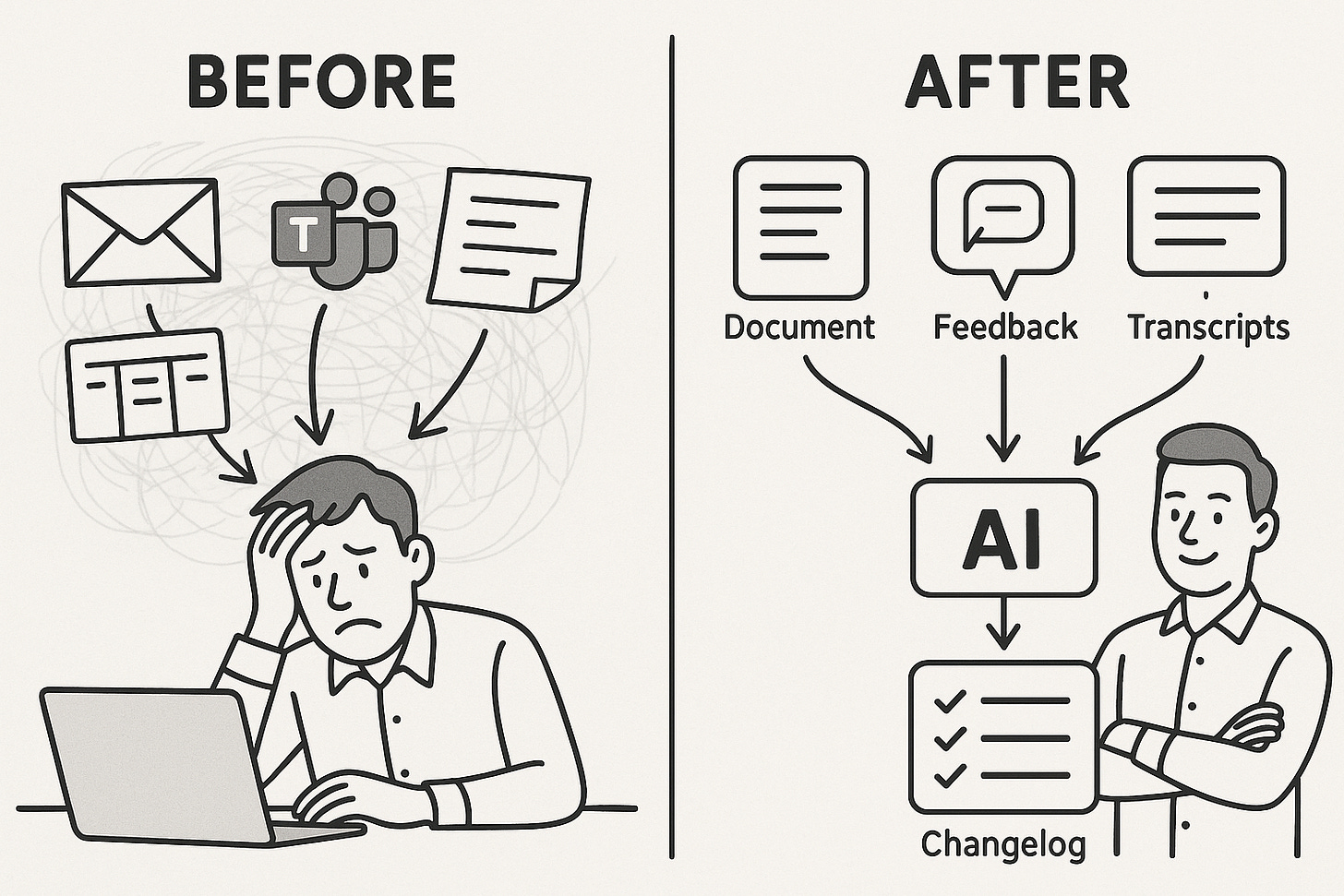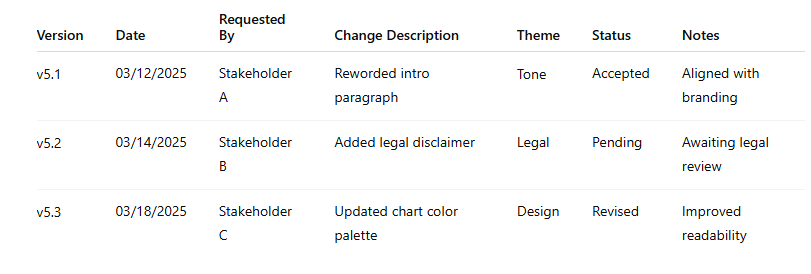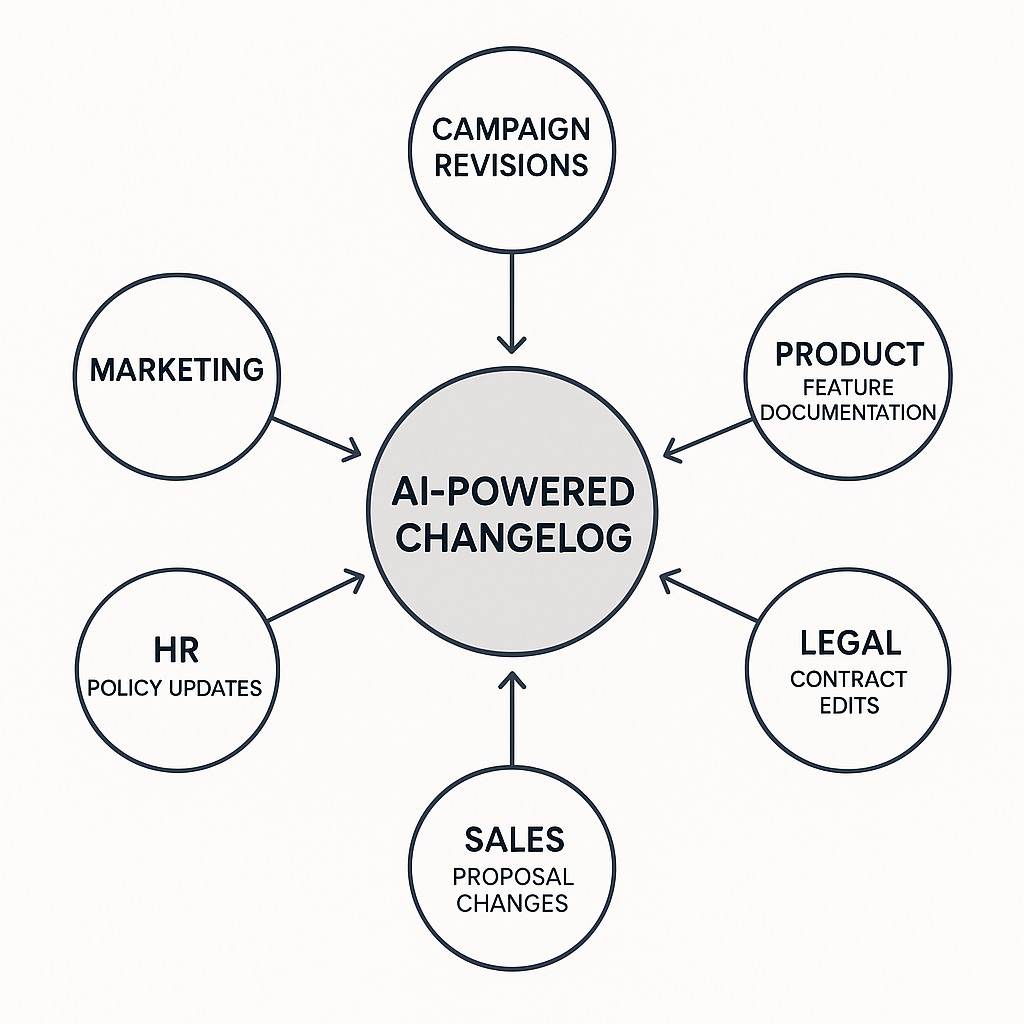Track Document Changes Like a Pro: AI-Powered Changelog How-To
Quick Overview
🕒 Reading Time: 5 Minutes
🎯 Target Audience: Business professionals, AI users, project managers, cross-functional collaborators, and content owners
🔑 Key Takeaway: Learn how to use AI to automate and streamline changelog creation across complex, multi-stakeholder deliverables — minimizing confusion, redundancy, and versioning chaos.
“Ever tried tracking 12 rounds of edits across project management software, email threads, Teams channels and live meetings... that spanned approximately 12 stakeholders and 4 months?”
If so, you already know why an AI-powered changelog is a game-changer.
Collaborating on a high-stakes deliverable across multiple functions can quickly spiral into chaos. Comments get lost in Slack. Redlines disappear in email threads. A decision made during a live meeting never gets documented. By the time you’re preparing the “final” version, no one can remember who asked for what — or if it was already addressed.
Worse still, by the 10th revision, stakeholders start changing their minds, requesting changes that revert back to elements from earlier versions. You find yourself in an endless loop of redundant iterations, constantly going back to your design team for repetitive changes. It's maddening, inefficient, and completely preventable.
That’s where AI-powered changelogs come in.
📌 Skip the Chaos. Let AI Do the Tracking.
Instead of manually building a version history (or worse, skipping it entirely), you can use AI to create a clear, categorized changelog. This gives you and your team a single source of truth across multiple rounds of revision — especially when working with:
Feedback from multiple stakeholders
Comments scattered across tools
Approvals that happened verbally
Design + content + compliance review all in one cycle
What You Need to Provide to AI
To get high-quality results, you need to give AI context. Here’s what works:
Minimum Inputs:
A list of stakeholder names (or just initials)
The themes you care about tracking (e.g., Branding, Legal, Tone, Formatting, Exec)
Documentation such as:
Transcripts from meetings
Logs from project management update sections (such as in Adobe Workfront)
Comments or track changes from Word/Google Docs
Screenshots from Teams chats
Email threads or project notes
Images of marked up documents (use your smartphone to snap the images directly into the chat)
🧾 Sample AI Prompt
Here’s a prompt you can use:
“Please create a changelog table with the following columns: Version | Date | Requested By | Change Description | Theme | Status | Notes. Use the attached transcript, stakeholder list, and screenshots to identify and tag each edit. Group changes by theme in a summary at the top of the document.”
Want to go further? Ask it to:
Highlight unaddressed or conflicting changes
Count the number of edits by stakeholder
Output the changelog into a Word or Excel-compatible format
🛠️ Use Cases Across Roles & Teams
Any department that collaborates on shared deliverables can benefit from an AI changelog:
Quick Start: AI-Powered Changelog Checklist
You can try this today using your preferred large-language model (LLM):
Collect feedback (transcripts, screenshots, doc comments)
List stakeholder names and preferred categories
Upload files into ChatGPT and include a prompt like the one above
Ask for a summary at the top: # of edits per theme, stakeholder breakdown
Export into Word or Excel for internal review
Final Thought
If you’re managing complex, multi-person deliverables, an AI-generated changelog gives you back control, alignment, and peace of mind. You won’t have to wonder, “Did we already revise this?” or “Who requested that edit?”
Let the AI handle the audit trail. You stay focused on the outcome.
Ready to try it?
Upload your transcripts, screenshots, and stakeholder notes into ChatGPT — and use the sample prompt we shared above to generate your AI-powered changelog.
Want to go further? Use a consistent file format and save each changelog for future reference or re-upload.
Note: The changelog process outlined here is best suited for complex, multi-stakeholder projects with a clear start and end - like the creation of a high-impact deliverable over several months.
For ongoing changelog tracking across multiple projects or extended timelines, you’ll want to store each log outside of your AI (in tools like Notion, Excel, or Word) and re-upload them as context when needed. If your team handles long running or frequently updated documents, a custom GPT or connected workflow could help sustain this over time.
This post may include visuals generated with the assistance of AI-based design tools. All content is original unless otherwise credited.
Heather Lambert-Shemo is a marketing and innovation executive helping organizations harness AI for growth, efficiency, and competitive advantage. Through her work with Linkage Labs, she empowers teams to move beyond task automation and use AI to unlock human potential, sharpen decision-making, and lead with clarity.






